Brent J. Lance
EEGNet: A Compact Convolutional Network for EEG-based Brain-Computer Interfaces
May 16, 2018
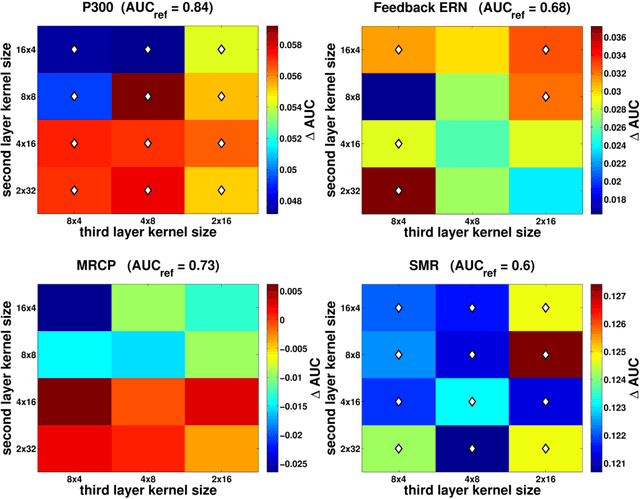
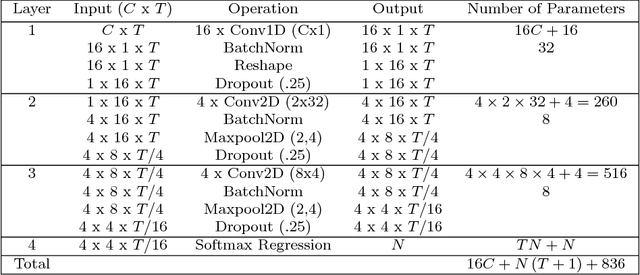
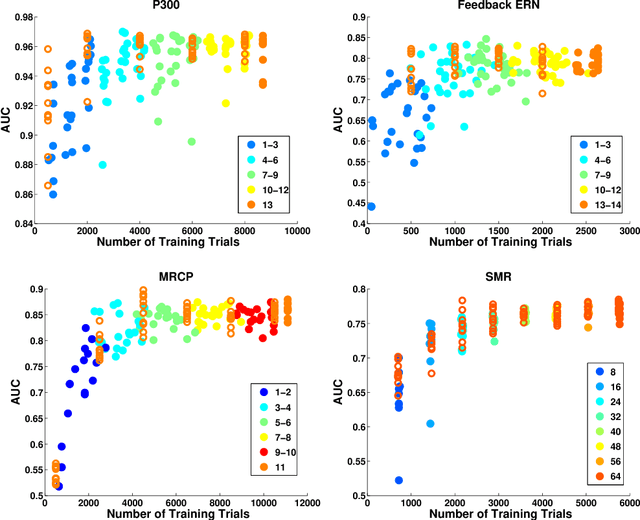
Abstract:Brain computer interfaces (BCI) enable direct communication with a computer, using neural activity as the control signal. This neural signal is generally chosen from a variety of well-studied electroencephalogram (EEG) signals. For a given BCI paradigm, feature extractors and classifiers are tailored to the distinct characteristics of its expected EEG control signal, limiting its application to that specific signal. Convolutional Neural Networks (CNNs), which have been used in computer vision and speech recognition, have successfully been applied to EEG-based BCIs; however, they have mainly been applied to single BCI paradigms and thus it remains unclear how these architectures generalize to other paradigms. Here, we ask if we can design a single CNN architecture to accurately classify EEG signals from different BCI paradigms, while simultaneously being as compact as possible. In this work we introduce EEGNet, a compact convolutional network for EEG-based BCIs. We introduce the use of depthwise and separable convolutions to construct an EEG-specific model which encapsulates well-known EEG feature extraction concepts for BCI. We compare EEGNet to current state-of-the-art approaches across four BCI paradigms: P300 visual-evoked potentials, error-related negativity responses (ERN), movement-related cortical potentials (MRCP), and sensory motor rhythms (SMR). We show that EEGNet generalizes across paradigms better than the reference algorithms when only limited training data is available. We demonstrate three different approaches to visualize the contents of a trained EEGNet model to enable interpretation of the learned features. Our results suggest that EEGNet is robust enough to learn a wide variety of interpretable features over a range of BCI tasks, suggesting that the observed performances were not due to artifact or noise sources in the data.
Agreement Rate Initialized Maximum Likelihood Estimator for Ensemble Classifier Aggregation and Its Application in Brain-Computer Interface
May 12, 2018



Abstract:Ensemble learning is a powerful approach to construct a strong learner from multiple base learners. The most popular way to aggregate an ensemble of classifiers is majority voting, which assigns a sample to the class that most base classifiers vote for. However, improved performance can be obtained by assigning weights to the base classifiers according to their accuracy. This paper proposes an agreement rate initialized maximum likelihood estimator (ARIMLE) to optimally fuse the base classifiers. ARIMLE first uses a simplified agreement rate method to estimate the classification accuracy of each base classifier from the unlabeled samples, then employs the accuracies to initialize a maximum likelihood estimator (MLE), and finally uses the expectation-maximization algorithm to refine the MLE. Extensive experiments on visually evoked potential classification in a brain-computer interface application show that ARIMLE outperforms majority voting, and also achieves better or comparable performance with several other state-of-the-art classifier combination approaches.
Offline EEG-Based Driver Drowsiness Estimation Using Enhanced Batch-Mode Active Learning (EBMAL) for Regression
May 12, 2018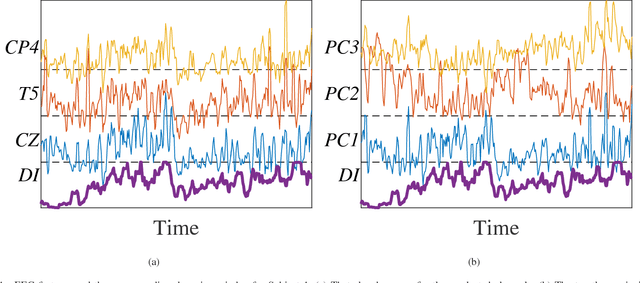
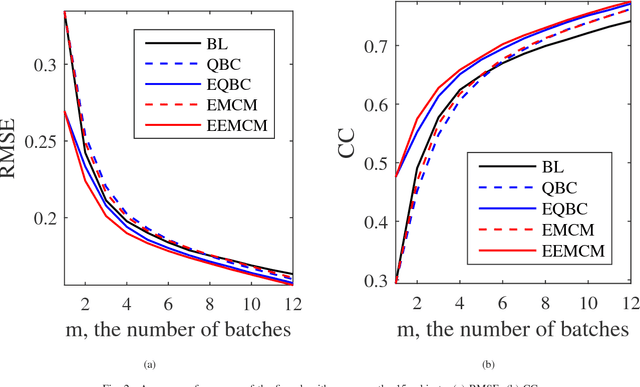
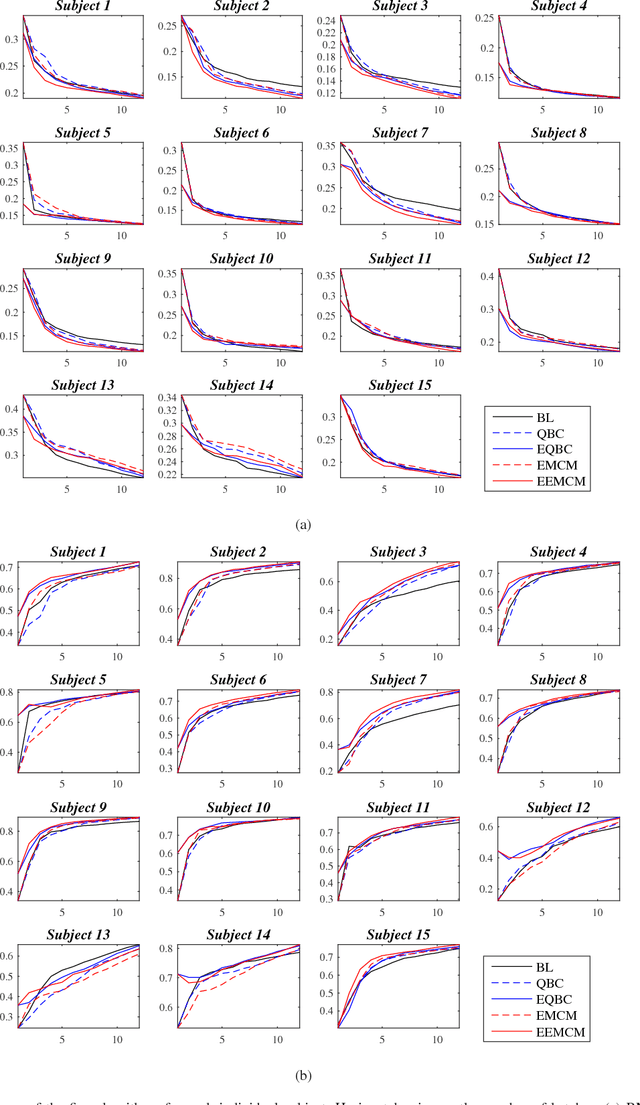
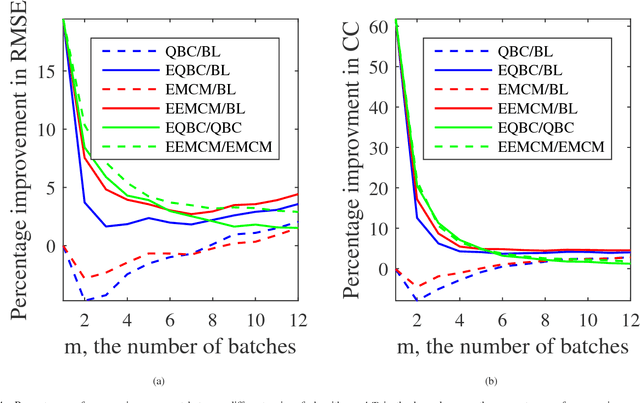
Abstract:There are many important regression problems in real-world brain-computer interface (BCI) applications, e.g., driver drowsiness estimation from EEG signals. This paper considers offline analysis: given a pool of unlabeled EEG epochs recorded during driving, how do we optimally select a small number of them to label so that an accurate regression model can be built from them to label the rest? Active learning is a promising solution to this problem, but interestingly, to our best knowledge, it has not been used for regression problems in BCI so far. This paper proposes a novel enhanced batch-mode active learning (EBMAL) approach for regression, which improves upon a baseline active learning algorithm by increasing the reliability, representativeness and diversity of the selected samples to achieve better regression performance. We validate its effectiveness using driver drowsiness estimation from EEG signals. However, EBMAL is a general approach that can also be applied to many other offline regression problems beyond BCI.
EEG-Based User Reaction Time Estimation Using Riemannian Geometry Features
Apr 27, 2017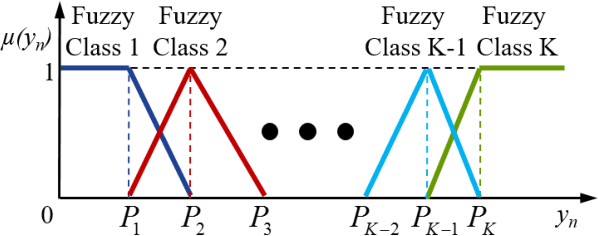
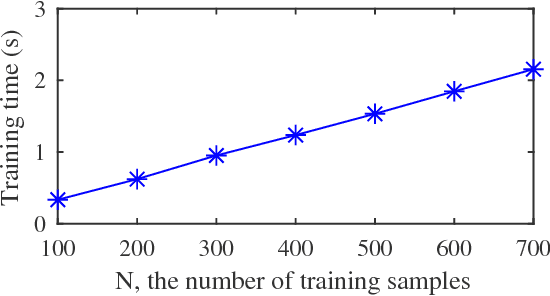
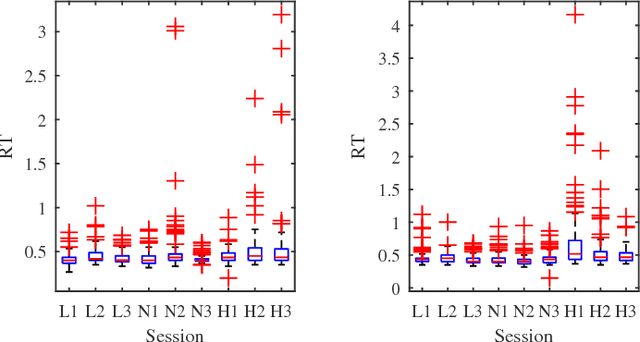
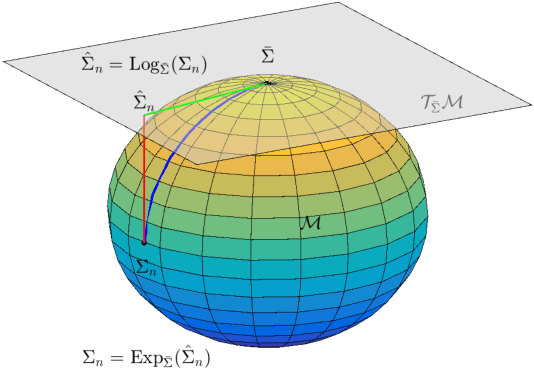
Abstract:Riemannian geometry has been successfully used in many brain-computer interface (BCI) classification problems and demonstrated superior performance. In this paper, for the first time, it is applied to BCI regression problems, an important category of BCI applications. More specifically, we propose a new feature extraction approach for Electroencephalogram (EEG) based BCI regression problems: a spatial filter is first used to increase the signal quality of the EEG trials and also to reduce the dimensionality of the covariance matrices, and then Riemannian tangent space features are extracted. We validate the performance of the proposed approach in reaction time estimation from EEG signals measured in a large-scale sustained-attention psychomotor vigilance task, and show that compared with the traditional powerband features, the tangent space features can reduce the root mean square estimation error by 4.30-8.30%, and increase the estimation correlation coefficient by 6.59-11.13%.
Switching EEG Headsets Made Easy: Reducing Offline Calibration Effort Using Active Weighted Adaptation Regularization
Feb 09, 2017



Abstract:Electroencephalography (EEG) headsets are the most commonly used sensing devices for Brain-Computer Interface. In real-world applications, there are advantages to extrapolating data from one user session to another. However, these advantages are limited if the data arise from different hardware systems, which often vary between application spaces. Currently, this creates a need to recalibrate classifiers, which negatively affects people's interest in using such systems. In this paper, we employ active weighted adaptation regularization (AwAR), which integrates weighted adaptation regularization (wAR) and active learning, to expedite the calibration process. wAR makes use of labeled data from the previous headset and handles class-imbalance, and active learning selects the most informative samples from the new headset to label. Experiments on single-trial event-related potential classification show that AwAR can significantly increase the classification accuracy, given the same number of labeled samples from the new headset. In other words, AwAR can effectively reduce the number of labeled samples required from the new headset, given a desired classification accuracy, suggesting value in collating data for use in wide scale transfer-learning applications.
Driver Drowsiness Estimation from EEG Signals Using Online Weighted Adaptation Regularization for Regression (OwARR)
Feb 09, 2017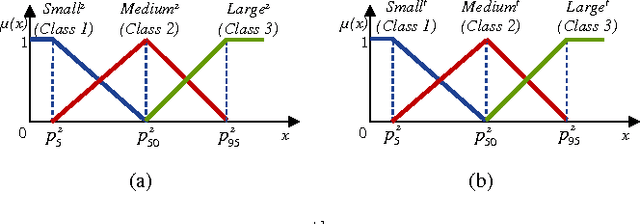
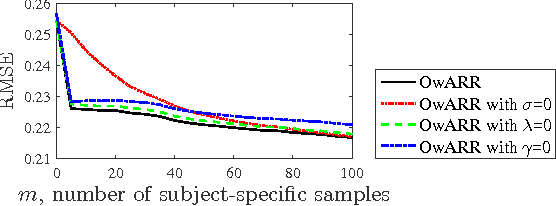
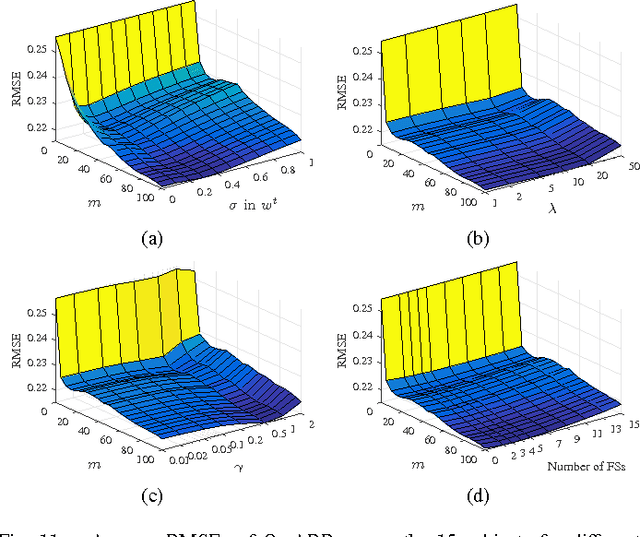
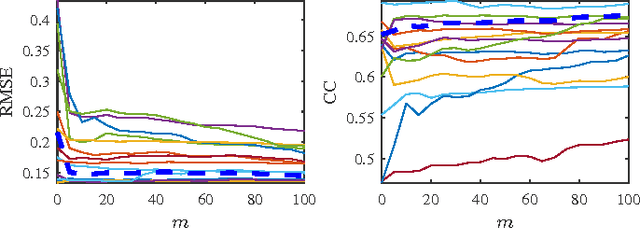
Abstract:One big challenge that hinders the transition of brain-computer interfaces (BCIs) from laboratory settings to real-life applications is the availability of high-performance and robust learning algorithms that can effectively handle individual differences, i.e., algorithms that can be applied to a new subject with zero or very little subject-specific calibration data. Transfer learning and domain adaptation have been extensively used for this purpose. However, most previous works focused on classification problems. This paper considers an important regression problem in BCI, namely, online driver drowsiness estimation from EEG signals. By integrating fuzzy sets with domain adaptation, we propose a novel online weighted adaptation regularization for regression (OwARR) algorithm to reduce the amount of subject-specific calibration data, and also a source domain selection (SDS) approach to save about half of the computational cost of OwARR. Using a simulated driving dataset with 15 subjects, we show that OwARR and OwARR-SDS can achieve significantly smaller estimation errors than several other approaches. We also provide comprehensive analyses on the robustness of OwARR and OwARR-SDS.
 Add to Chrome
Add to Chrome Add to Firefox
Add to Firefox Add to Edge
Add to Edge